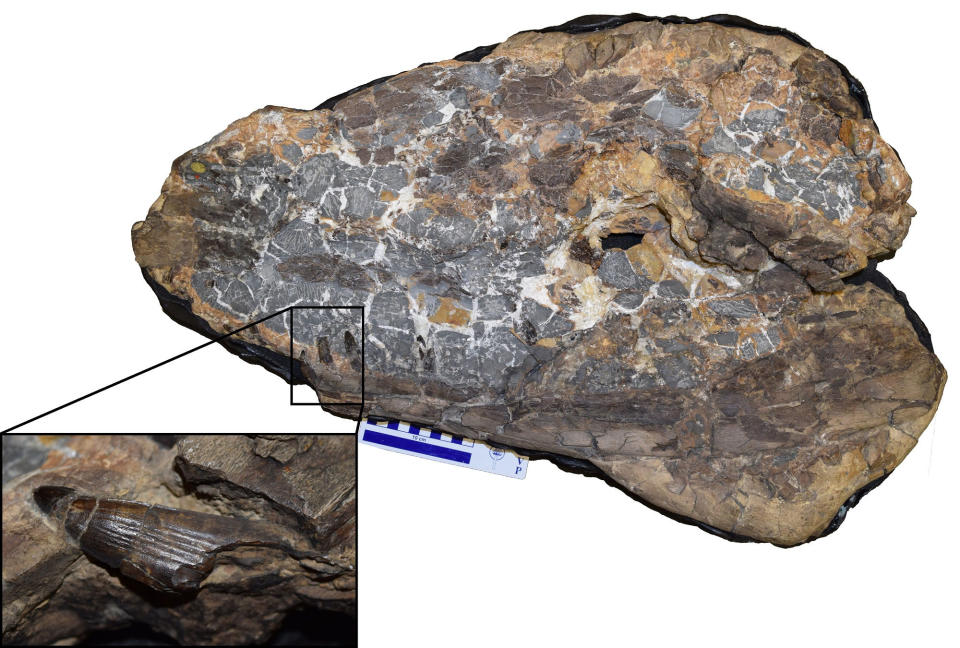Scientists have discovered a new species of prehistoric sea monster related to crocodiles

A new species of prehistoric sea monster has been identified, shedding light on the origins of the distant relatives of modern crocodiles.
The new species was a 10-foot-long animal that lived in the warm, shallow seas covering much of what is now Europe, scientists said.
Its powerful jaws and serrated teeth allowed it to feed on large prey, such as prehistoric squid.
Palaeontologists at the University of Edinburgh discovered the new species of marine predator by studying a damaged fossil held in the Natural History Museum’s archives for almost 150 years.
The ancient reptile – called Ieldraan melkshamensis – has been nicknamed the Melksham Monster after the town in Wiltshire, England, where it was unearthed.
Researchers said that, until now, it was thought the sub-family of prehistoric crocodiles to which the new species belongs originated in the Late Jurassic period, between 152 and 157 million years ago.
MOST POPULAR STORIES FROM YAHOO UK
Philip Hammond warns Boris Johnson he isn’t ‘unsackable’ as tensions rise at Tory conference
Australian teenager, 15, killed after being crushed by his own gym weights
BBC’s Laura Kuenssberg to get her own bodyguard at the Conservative Party conference
Las Vegas shooting: Everything we know about suspected gunman Stephen Paddock
Shoppers warned against using bags for life over potential food poisoning risk
But the latest discovery, together with re-analysis of other fossil evidence, suggests that the group arose millions of years earlier, in the Middle Jurassic spell. The new species is believed to date back 163 million years.
Davide Foffa, a PhD student in the university’s School of GeoSciences, who led the study, said: ‘It’s not the prettiest fossil in the world, but the Melksham Monster tells us a very important story about the evolution of these ancient crocodiles and how they became the apex predators in their ecosystem.’

The specimen, acquired by the museum in 1875, was identified as a new species based on the distinctive features of its skull, lower jaw and teeth.
Mark Graham, senior fossil preparator at the Natural History Museum, said: ‘The specimen was completely enclosed in a super-hard rock nodule with veins of calcite running through, which had formed around it during the process of fossilisation.
‘This unyielding matrix had to be removed by force, using carbon steel tipped chisels and grinding wheels encrusted with industrial diamonds.
‘The work took many hours over a period of weeks, and great care had to be taken to avoid damaging the skull and teeth as they became exposed. This was one tough old croc in life and death.’
Dr Steve Brusatte, of the university’s School of GeoSciences, who was involved in the study, said: ‘The Melksham Monster would have been one of the top predators in the oceans of Jurassic Britain, at the same time that dinosaurs were thundering across the land.’
The study, published in the Journal of Systematic Palaeontology, was funded by Marie Sklodowska-Curie Actions.

 Yahoo News
Yahoo News 